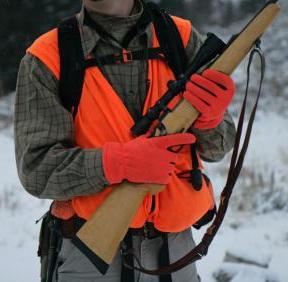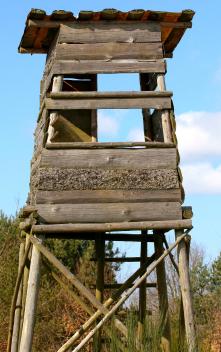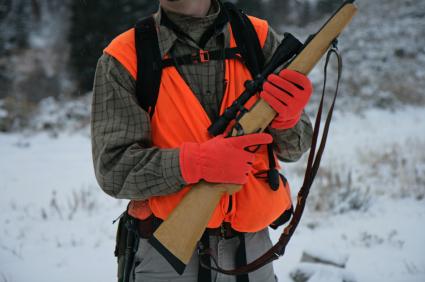 Each year thousands of deer hunters take to the field in hopes of snagging a buck or a doe but instead wind up in the hospital or worse.
Each year thousands of deer hunters take to the field in hopes of snagging a buck or a doe but instead wind up in the hospital or worse.
Although shooting accidents do happen, it’s the act of hunting itself that can often prove more dangerous in the form of falls, heart ailments and other issues.
A study by the Ohio State University Medical Center and 2010 found that among hunting- related injuries, 50 percent were from falls and only 29 percent were from gunshot wounds. Among fall-related injuries, 92 percent were from tree stands.
With a typical tree stand placed 10 to 30 feet in the air, someone falling from that height could hit the ground at more than 30 mph, according to the study.
Being out in the cold with heavy gear and facing an adrenaline rush or dragging a deer back to the truck can take a toll on someone even if they’re in shape. Those with risk factors for a heart attack need to be especially careful.
Any hunting-related injury can also be exacerbated by the fact that hunters tend to be out in the woods, far from help and separated from each other. If someone is hurt their hunting buddies might not know about it until the end of the day—with the victim at risk of greater injury and hypothermia.
Tree stands top the list
Dr. Nathaniel Brooks, a neurosurgeon at the University of Wisconsin Hospital, sees an increase in these injuries every deer season.
“Certainly the most significant injuries that I deal with tend to be related to falls from tree stands rather than what most people would expect, which would be gunshot wounds and things like that,” Brooks says.
 The Ohio study found that among injuries from tree and hunting stand falls, 81 percent of them required surgery and 59 percent of them suffered fractures.
The Ohio study found that among injuries from tree and hunting stand falls, 81 percent of them required surgery and 59 percent of them suffered fractures.
Brooks says using a harness while in a deer stand is a crucial. Dear stands typically aren’t very large and hunters are at risk of falling asleep, given how early they start their day. Brooks says the most dangerous part of using a deer stand seems to be the transition when people are climbing in or out of a stand.
Many of the injuries that Brooks sees are from people who hit the ground headfirst, on their neck or upper back.
“It’s a pretty high likelihood of having a spinal cord injury with these types of injuries, with these types of falls, and that can be a partial spinal cord injury or something where you’re really truly paralyzed so it can be quite devastating,” Brooks says.
If someone does fall from a tree stand, and there’s a suspicion they may have fractured their back, they should only be transported on a flat backboard or something similar, so it’s generally better for emergency personnel to be brought to the victim rather than the other way around. Brooks says it really depends on how the person fell and what they’re likely injuries are.
If the victim feels extreme pain and doesn’t feel like they could move, that’s a pretty good indication of a severe injury. Another thing to consider is how long it would take to get help to the victim and whether they’re at risk of hypothermia from being exposed to the cold.
“The key thing is stabilization of the patient so not moving them, unless they’re in significant danger, is really probably the first thing to do. Keep them from further injuring their spinal cord if there is a suspicion of a spinal cord injury,” Brooks says.
Hearts full of adrenaline
Hunting can also take a toll on the heart, especially if someone has heart disease or doesn’t get enough exercise in the off-season.
Dr. Marc Shelton, an interventional cardiologist and president Prairie Cardiovascular in Springfield, Ill. sees an increase in heart attacks every fall among hunters. The physical demands, cold weather and excitement can add up to problems even for those who think they’re healthy.
 “They may be excited about the hunting so their adrenaline goes up,” Shelton says. “They’ve got increased adrenaline, increased blood pressure, increased heart rate, increased cardiac work from the cold and maybe dragging deer and carrying guns and things like that—all going together to make heart attacks during hunting fairly common.”
“They may be excited about the hunting so their adrenaline goes up,” Shelton says. “They’ve got increased adrenaline, increased blood pressure, increased heart rate, increased cardiac work from the cold and maybe dragging deer and carrying guns and things like that—all going together to make heart attacks during hunting fairly common.”
A study by the Beaumont Hospital Cardiac Rehabilitation Program, published in the American Journal of Cardiology in 2007, equipped male hunters with heart monitors and sent them into the field.
It found the heart rates of some hunters would nearly double just from seeing a deer, even if the hunter was standing still. The authors concluded that hunting was such a strenuous activity that it could trigger heart disease in a sedentary person.
“If you’ve been a couch potato you have to be careful going to a high level of activity without training,” Shelton says. “You shouldn’t outstrip your physical abilities all at once in the cold. It’s like shoveling snow, the analogy there is if you’re not in good shape and you have a heart issue you shouldn’t be shoveling snow.”
In addition to the physical demands of hunting, Shelton says hunters are typically away from home for extended periods and get out of their usual routines, so they forget to take their medicines or fail to bring them along.
Hunters also tend to sit quietly in a blind, waiting for game, where they run the risk of developing a Deep Vein Thrombosis—a clot in the leg that is also known as a risk for passengers on long flights.
 Not only can a DVT damage someone’s leg, it could also become dislodged and relocate to their lungs and become a pulmonary embolism, a potentially fatal blockage of the main artery to the lungs.
Not only can a DVT damage someone’s leg, it could also become dislodged and relocate to their lungs and become a pulmonary embolism, a potentially fatal blockage of the main artery to the lungs.
Shelton says the signs of a heart attack are a chest discomfort with or without shortness of breath, with or without itchiness, with perhaps some nausea or vomiting and heart palpitations.
A DVT is usually associated with swelling and pain in the calves, sometimes in one leg and not the other. A pulmonary embolism is associated with a shortness of breath and sometimes a sharp pain in the chest.
Staying safe & healthy
Shelton says everyone needs cardiovascular activity just for regular health, but hunters can put themselves at risk if they try to go straight from the couch to the field without building up their physical fitness over time.
“If you’re doing a couple of miles walk a day the chance that you could walk three or four miles in a day is pretty good, but if your usual activity is two blocks a day you wouldn’t necessarily expect to push forward for a four mile hunt,” Shelton says.
If someone does have a problem it’s important to get to a hospital as soon as possible. With that in mind, Brooks recommends having an emergency plan in place and a way for hunters to stay in touch with each other out in the woods, either by cell phone or radio if possible.
“If somebody twists an angle or breaks a leg, those are other common injuries that can occur, how are you going to get them out of there?” Brooks says. “That kind of preparedness, which is a little bit of a doomsday scenario when you’re trying to have fun hunting, but it’s good to have thought it through at least once or twice before it happens.”
Additional signs of a heart attack, from the American Heart Association:
• An uncomfortable pressure, fullness or squeezing.
• Pain in the center of the chest that lasts more than a few minutes or goes away and comes back again.
• Pain that spreads to the shoulders, neck and arms and is often accompanied by lightheadedness, sweating, nausea and shortness of breath.
Tips for healthy hunting, from Beaumont Hospitals:
• Anyone with heart disease or with a family history of heart disease, high blood pressure or high cholesterol should have their doctor’s permission before going on a hunt.
• With their doctor’s approval, hunters should begin walking 30 minutes per day eight to 12 weeks before a hunt.
• Refrain from alcohol and smoking the day before or during hunting.
• Refrain from eating a heavy meal before hunting.
• Hunters with heart disease should not drag a deer out of the woods.
• Hunters should seek immediate medical attention if they experienced dizziness, chest pain or heart palpitations.












